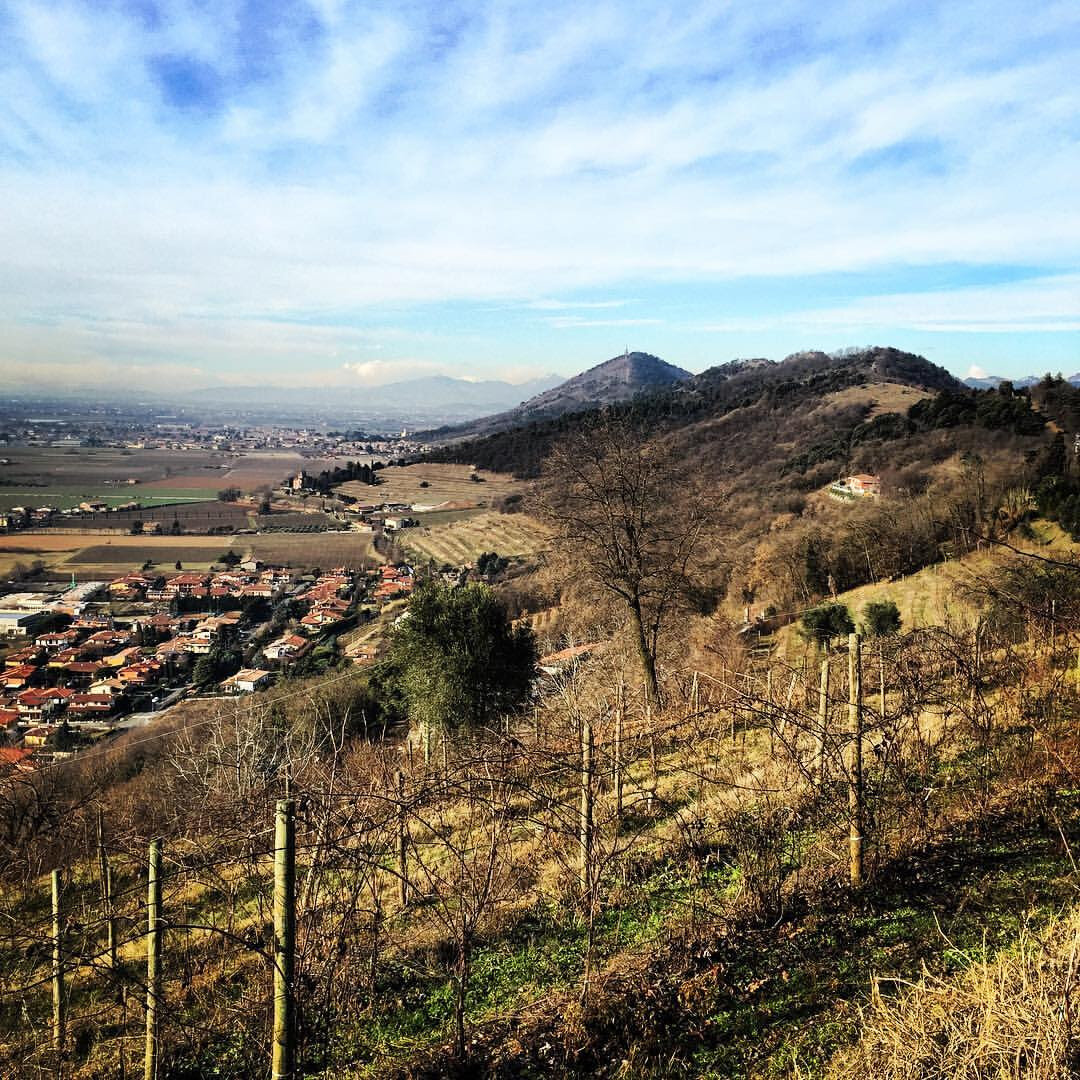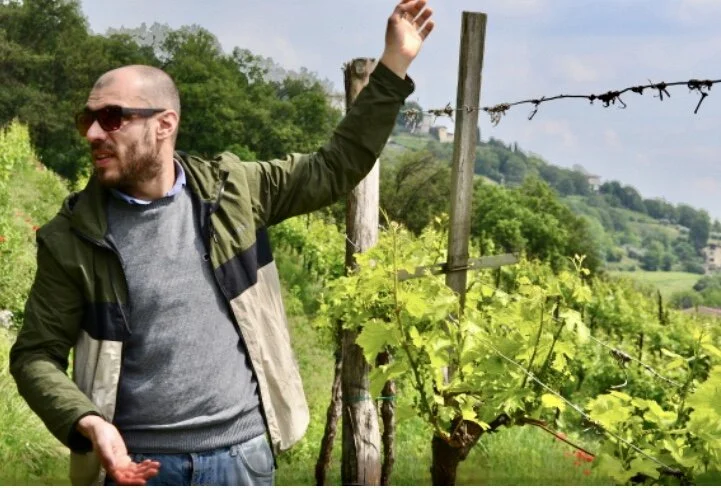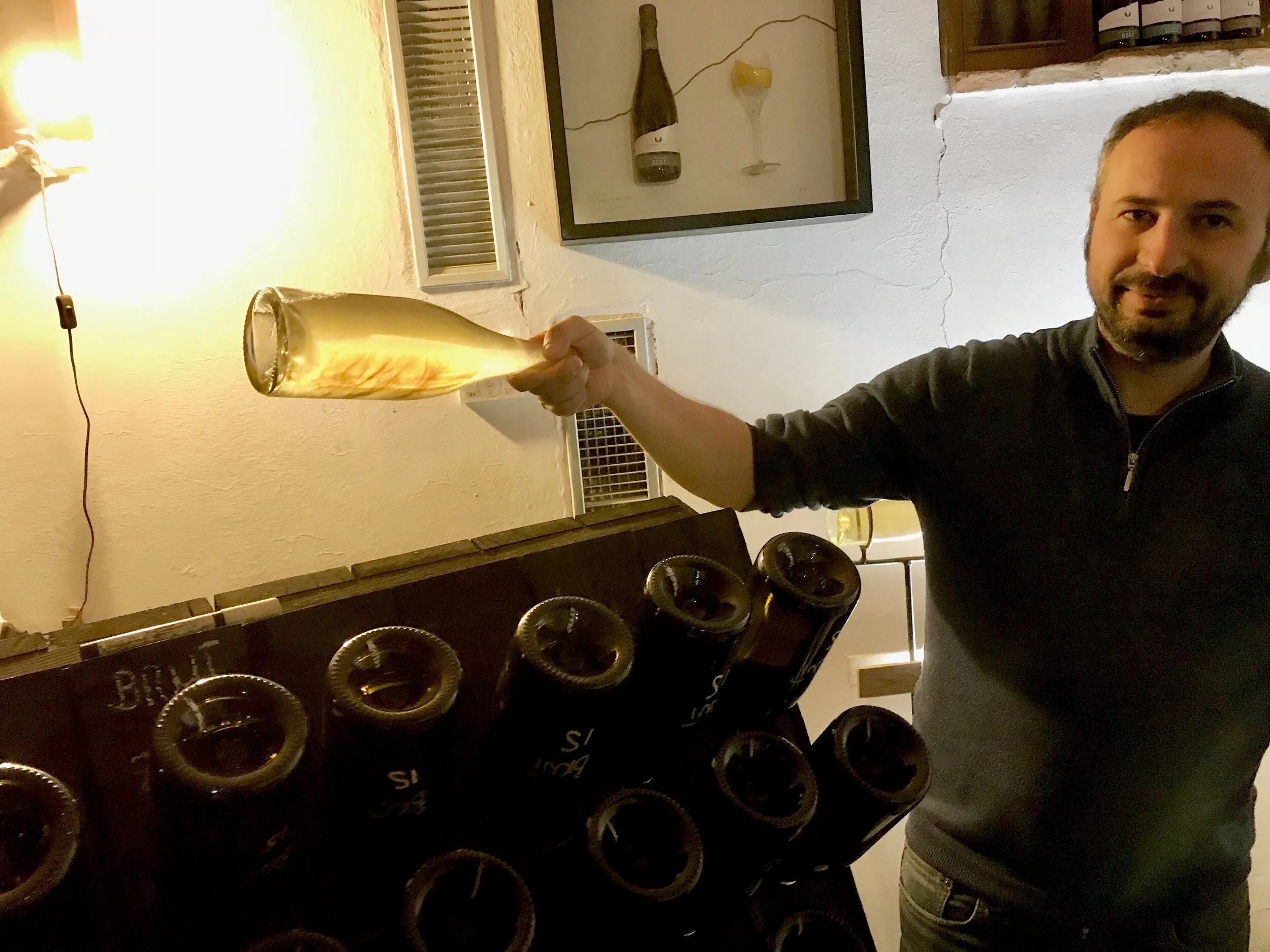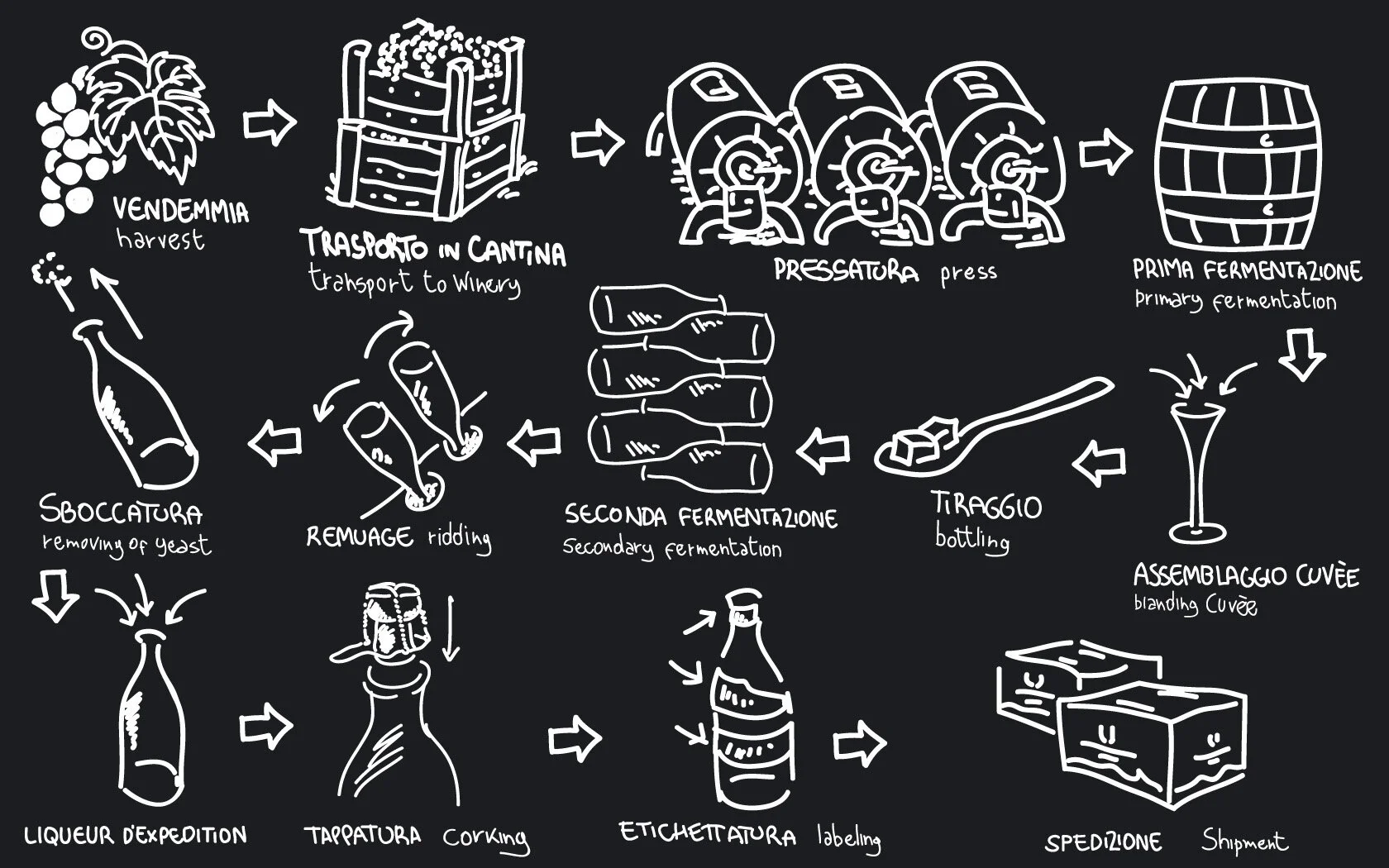Corte Fusia - Coccaglio, Italy
Daniele and Gigi - they make it happen.
CORTE FUSIA: IN A SPECIAL, SMALL PLACE
Possibly our most enjoyable wine experience is discovering an unknown wine - a new expression - something complex, fine, and flat out delicious. When you taste it you know it: it can be brought to our noses at our counter, or it can be a suggestion to try, could come from a friend, or it could be one of the seventy-five or so wineries we visit on one of our trips. Franciacorta's Corte Fusia is one of these - a very small winery we sought out with high hopes and left with even higher hopes. Partners Daniele Gentile and Gigi Nembrini are daily at work resetting the bar from the nearby sea of anonymous sugar-slugged sparklers from Franciacorta wines that have proliferated the wine dinking cosmos
The short story: two forward-thinking guys with incisive dedication - Gigi Nembrini and Daniele Gentile - are producing fantastic sparkling wines. Complete believers in their vineyards, they work great terroir in the checkered quilt that is Franciacorta: a good amount of which is average land; a flatter, arid, often chemically trodden basin where dosage and other tricks help cover up the "Great Lakes" of average wine. The Corte Fusia vineyards - unlike much of Franciacorta - are located in high rocky hills and enjoy cool nights and sunny days and look down on the sometime fog/smogged heart of the appellation. If you know of our friends at Ca del Vent near Brescia, well, Gigi and Daniele work with related passion. Their winery is tiny - they produce around 1500 cases a year!
CLOUDY HORIZONS:
FRANCIACORTAN STATE OF AFFAIRS
Franciacorta is under a certain kind of siege, shots across the staid but shiny, long time bow. Things change. Once there were no airplanes, Neil Armstrong took a stroll on the moon, Tiger sank a few putts... stuff's happened. In Franciacorta, the true outlaws - Ca del Vent, after officially dropping out of all Franciacorta Associations/association took to magic-markering in black their last sparkling wine bottle caps to erase the “Franciacorta” logo! Hey, someone invented whatever you're using to read this - so why not change the face of the wine if you feel a shortcoming? People see new things, learn new ways, recapture and learn from old ones, they learn more about the ground: what works what doesn't - youthful enthusiasm gains somehow when tendered well. Franciacorta's hard for the middle of it...
Change, like that witnessed in Champagne (Growers etc), is there to stay. We're giving thanks - big time. Who needs three million bottles that all taste the same? The changes that a very few producers are incorporating will eventually force even the biggest producers in the zone (some making millions of bottles badly and carelessly - terrorists, not terroirists, out to get us, to get you). As the wine world, wine press, and blogistas see and know that stellar wines of individuality can find their way to America, and affordably so, the rest of Franciacorta will need to assess their work. No doubt some producers will continue down the "sparkling wine is lifestyle" (watches, cars, condos), while others will take the less walked road and shoot for wines of specificity - or as Portlander Matt Kramer has expressed, wines with a sense of place, of "somewhereness."
Why? Some producers simply want to make wines that reflect the place, their place. If a wine from Franciacorta zone/soil/place A, is different than Franciacorta zone/soil/place B, why do so many Franciacorta wines taste the same here in the USA? Three reasons stand out:
1- With "Champagne" as a model, many producers are looking to create wine of a “style” and A “flavor” - a flavor many people will like.
2- Franciacorta is not well known and selling it is not easy, thus frequently, with a large percentage of Francaicorta coming to America, they tend to be middle of the road wines of mass production. Until recently, the better wines have not come here, or if they did, the prices were too high. All this leads to reason three.
3- The average, overpriced wines sell slowly, and often the wines that made their way here were not fresh. They’re like a day old bread, and we all know what that tastes like vs. something right of the oven. Sparkling wine is much the same.
Bottom line is that it has been hard to find fresh, fairly priced, well made wines from the region. That's why we have visited half a dozen times and in addition to Corte Fusia now also work with Stefano Cola, Ca Del Vent, and Divella.
CORTE FUSIA:
SAMENESS BREAKOUT - TERROIR FIRST
A few producers are beginning to show what the best from the wide swath, high-production, lifestyle promotion brigade that has been Franciacorta. Nothing snobby - it is not like no one is trying (and trying for what remains a large question) to do the best with what they have: the challenge is exactly that - what they have. Any winery can produce a lot of wine with bubbles and sugar and fancy names and labels and find some audience somewhere. Producing a wine with bubbles that offers complexity, originality and a sense of place, well that is another matter. One needs the place for the sense of place, one that is distinctive. Gigi and Daniele have just that. Looking at a map tells a big part of the story - theirs and the region.
Topographical map of the Franciacorta appellation.
The map helps illustrate the circumstance of place. The region can get warm, the lake brings humidity and helps trap the air in the center and lower regions of the appellation. Vines proliferate much of that area, and as well historically a fair amount of chemicals have littered the area both to fight the impact of the climate as well as to control other pests. Like many places so impacted, ridding the soil of that impact will take a long time. At the same time there are places with high and higher hills, Moree rocky soil and finer terroir to procedure grapes of quality to help make wines of more specific identity.
Corte Fusia farms vines near their winery at Coccaglio. You can see it just above the “La Franciacorta” logo on the bottom left of the map. Their vines are in the high relief area at Monte Orfano - the highest parts of the green relief section above the logo. The cooler weather, higher exposure and compact quartz, gravel, red clay and limestone help price wines far more compelling than those made on the more flat, topsoil heavy vineyards in the plain. You can taste it in their wines.
(E)
How it all comes together, Corte Fusia style.
Click on each wine for more detail.










